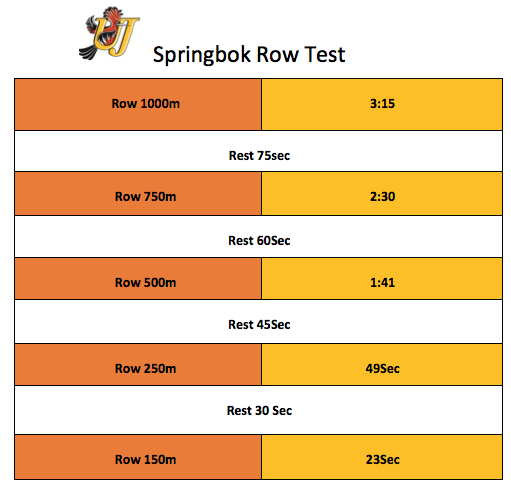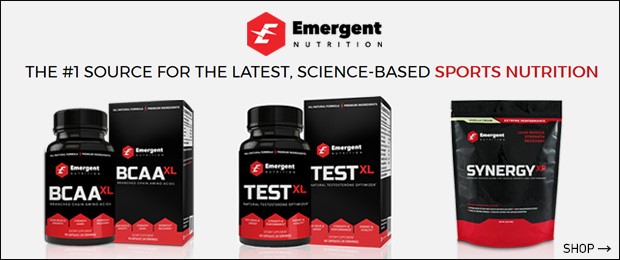
My testing protocols are actually quite small in number. Since we see the players day in and day out, there is not much we do not know about where the players are that cannot be observed or confirmed with a simple chat. We attempt to place the tests coming back from the breaks in a season to ensure no issues with the rugby practices. With this, we will have about six times a season that we can test.
Although with body composition we test based on results to standards—if they fall into the red group it is every two weeks, amber is every six weeks, and green every 12 weeks—we collect speed data every speed session, which is twice a week. We collect 10-meter, 20-meter, and 30-meter times. We also collect data over 40–60 meters outside to ensure we have players get up to top velocity rather than just the acceleration data we get from inside testing. In the weight room we go down to heavy singles, doubles, and triples every three to four weeks, so we have estimated one-rep maxes that we can check against historical data and positional averages over time as well.
RECENT: Engineering Physical Performance — Reassess Utilization of INOL Model
Rugby is a high-intensity intermittent collision sport, which requires a multi-factorial physical training approach to optimize performance. These high intensities of repeat efforts are underpinned by a well-developed aerobic system. In the game itself phases can add up, and with the demands of a kick chase or a team that wants to keep the ball in play, there can be up to three minutes or more of continuous movement. Aerobically, players need to be ready for this and trained appropriately, so as not to go missing and create gaps in the defensive line for the opposition to exploit.
The aerobic system is what I test first upon return from an off-season break. My preference is the 2.4-kilometer (1.5-mile) continuous run for time, as I believe this provides the safest and best estimate of aerobic fitness when first starting back. Other tests such as the Beep Test or the YoYo test require directional change which, given that players, over a break, have not been training for four to six weeks, may place them at a risk of injury. The other aerobic test that has risen to prominence in the rugby world over the last few years is the Bronco, NRL Shuttle, Mo Farah, or 20-40-60 drill — all the same test, but called different names around the world. This test is a continuous shuttle run returning to zero after each run out and completing the entire run five times for a total distance of 1.2 kilometers. We have found a very high correlation between the Bronco and the YoYo test, of greater than 0.8. It has replaced other tests in-season as our aerobic test of choice, due to the simplicity of running it with large numbers on the field using the field markings and not impacting greatly on the following rugby session.
Yo-Yo Standards
- Prop, 17+
- Hooker, 17.5+
- Lock, 17.5 +
- Loosies, 19.4+
- Insides, 18
- Midfield, 18
- Back 3, 18.4+
2400-Meter (1.5-Mile) Time Trial Position Standards
- Loosies (6, 7, 8) – Less than 8:30–8:45
- Insides (9, 10, 12) – Less than 8:45–9:00
- Outsides (11, 13, 14, 15) – Less than 9:00–9:15
- Hookers (9) – Less than 9:15–9:30
- Tighties (1, 3, 4, 5) – Less than 9:30–9:45
Mo Farah (Bronco) (NRL Shuttle)
Revised Positional Standards
1. 5:05
2. 4:55
3. 5:20
4. 4:55
5. 5:05
6. 4:55
7. 4:30
8. 4:55
9. 4:30
10. 4:45
11. 4:40
12. 4:45
13. 4:45
14. 4:40
15. 4:40
The other testing that we use on a regular basis are more lactate and phosphate energy system based tests. Some of these include:
Repeat Efforts Test
Perform a down and up on the goal line, hands touch your hips, get up sprint to five-meter line, down and up, back to goal line, down and up, then sprint out to 22-meter line around a cone and back to the goal line. Repeat this four times on a 30 seconds rolling clock, then rest two minutes and repeat for a total of four sets. Record the total time it takes you to complete each rep of each set and look at the drop off over time.
Springbok Shuttle
Place marker cones at five-meter intervals and perform an out-and-back run, touching the line on each turn, returning to the zero point after each out-run. Run for 30 seconds and rest for 30 seconds, for a total of six sets. Record the total distance you have run and also the drop off from the first to the sixth set.
Standards
1/3 — 780 Meters
2 — 805 Meters
4/5 — 795 Meters
6/7/8 — 815 Meters
9/10 — 830 Meters
11/14/15 — 815 Meters
12/13 — 825 Meters
Records from a Super Rugby team
1: 778 Meters
2: 783 Meters
3: 795 Meters
4: 781 Meters
5: 796 Meters
6: 824 Meters
7: 817 Meters
8: 836 Meters
9: 848 Meters
10: 831 Meters
11: 810 Meters
12: 814 Meters
13: 827 Meters
14: 805 Meters
15: 810 Meters
Nick Lumley has used a very similar test with the added bonus of performing a down-and-up as you cross each of the lines. You go for 45 seconds and record the total distance run. You get three minutes and 15 seconds recovery, so on a four-minute rolling clock. Perform for a total of six sets. Record how far you get in the session and also look at the decrement from set one to set six. The test can be done on a Watt Bike, with the same times and rest periods, recording the distance you managed to ride in the 45 seconds. Also look at decrement over the six sets of this as well.
This next test was given to me by Jacques Durand from the University of Johannesburg, which he uses with his university rugby players as an alternative off-feet test:
Phosphate Repeatability Tests
The last classification of metabolic testing is phosphate related tests. As with all the tests mentioned, the athlete must give a 100% genuine effort for the tests to be reliable and to mean anything in organizing modifications to training based on results.
There are two tests that I have used for many years and believe they offer the best information on the status of your players in this vital energy system, especially for outside backs. Simply put, they are repeating maximal sprints with limited recovery, either for time or distance; seven seconds or 35–40 meters is often the detail. A decrement of less than 10% is usually where you want your player personnel to be at on these tests.
These websites have the complete details of the test. They are basically testing the same qualities of repeat efforts at near maximal intensity:
Also, here is the dilemma: do you use a full battery of tests to measure each of the energy systems? This is time-consuming, especially in-season where training for the sport dominates, on about an 80/20 ratio to strength and conditioning. Or, and this is where I currently stand on the issue, if a player has passed the aerobic standard for his position, or is very close, is it a better bang for your buck to test the system that is most relevant to the positional demands of the player? My thoughts are:
- Tight Forwards (Front Five) – Aerobic Test
- Loose Forwards & Inside Backs (Middle Five) – Lactate Test
- Outside Backs (Back Five) – Phosphate Test
It will be very interesting to hear your thoughts and comments on this aspect of the conditioning process. Thanks for reading.














9: highly aerobic in nature, with a high emphasis on change of direction and acceleration, so the Bronco Test,
10: less aerobic than the 9, I often group this position with the 12 since many players play both of these positions, so I would go with the Springbok Shuttle Test, during the season, cheers, ashley